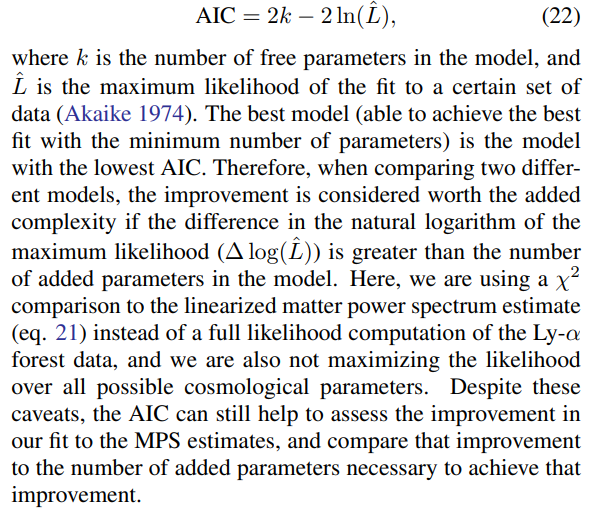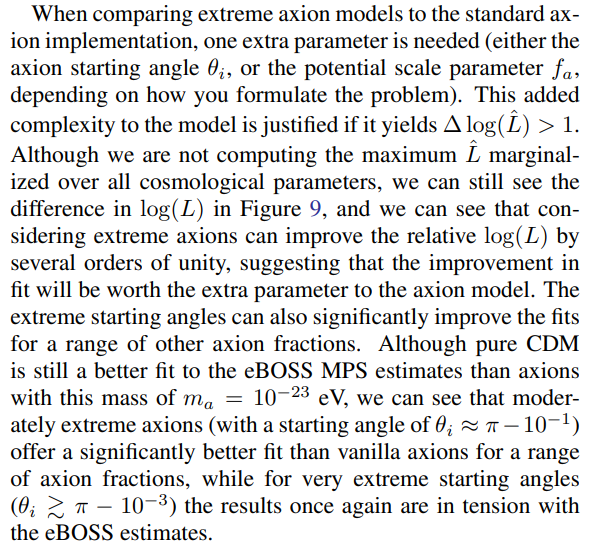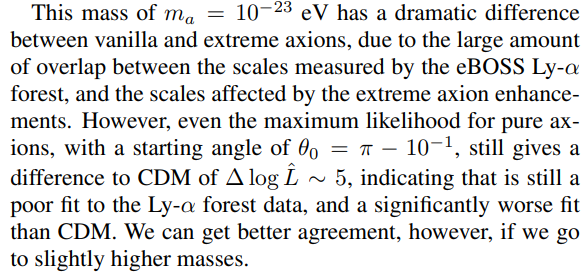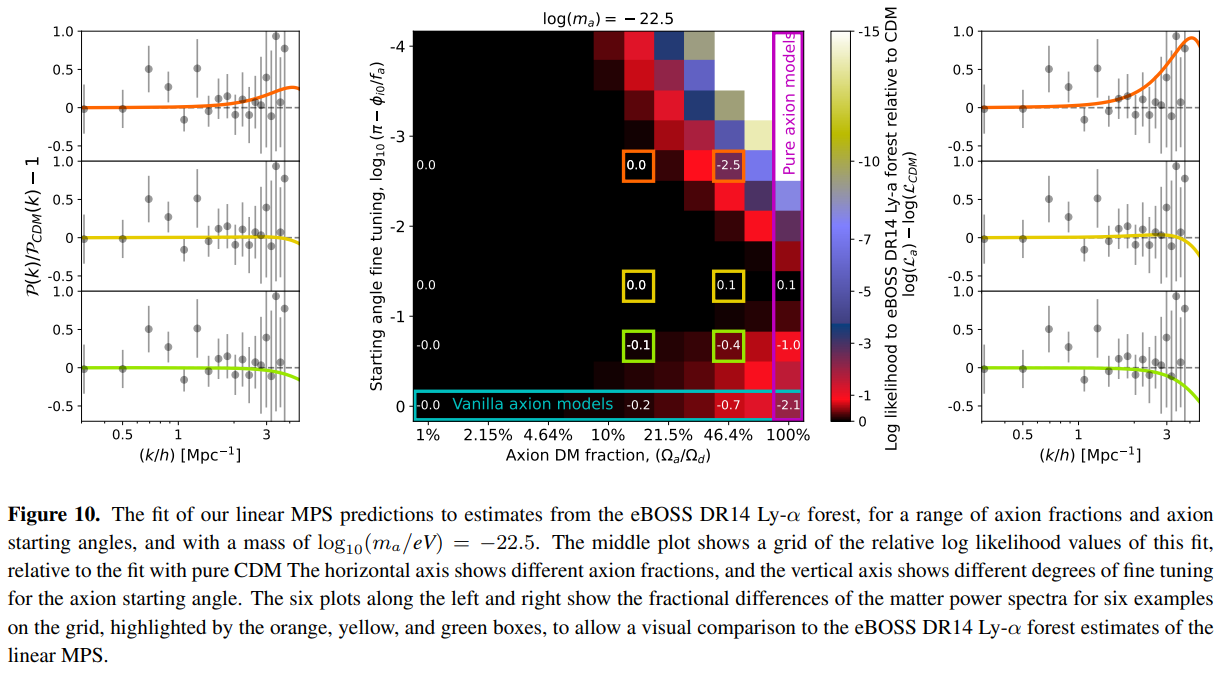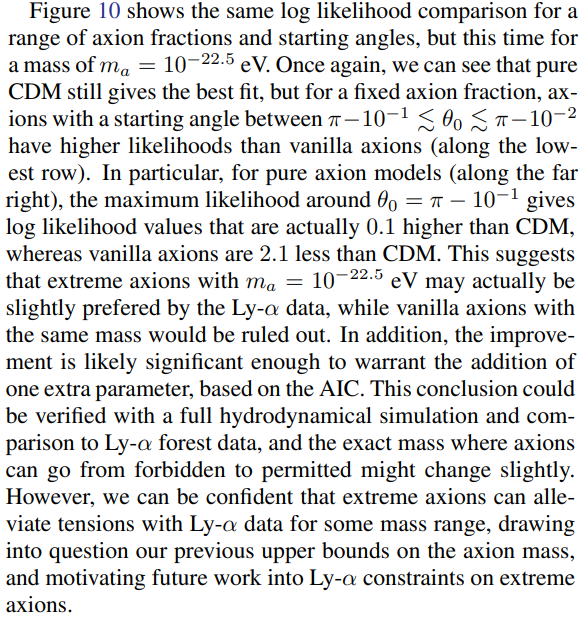This paper is available on arxiv under CC 4.0 license.
Authors:
(1) HARRISON WINCH, Department of Astronomy & Astrophysics, University of Toronto and Dunlap Institute for Astronomy and Astrophysics, University of Toronto;
(2) RENEE´ HLOZEK, Department of Astronomy & Astrophysics, University of Toronto and Dunlap Institute for Astronomy and Astrophysics, University of Toronto;
(3) DAVID J. E. MARSH, Theoretical Particle Physics and Cosmology, King’s College London;
(4) DANIEL GRIN, Haverford College;
(5) KEIR K. ROGERS, Dunlap Institute for Astronomy and Astrophysics, University of Toronto.
Table of Links
- Abstract and Intro
- Methods
- Phenomenology
- Discussion and Future Work
- Conclusion
- Acknowledgments and References
3. PHENOMENOLOGY

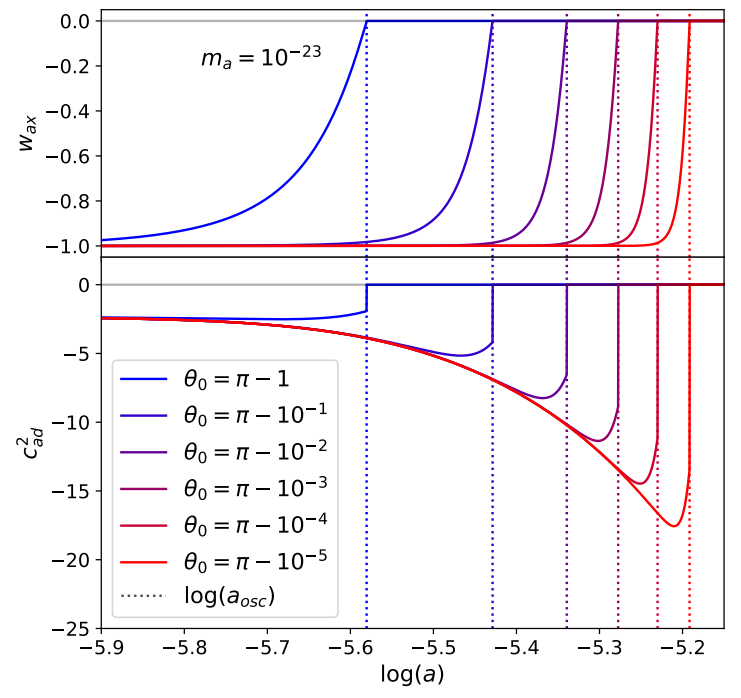
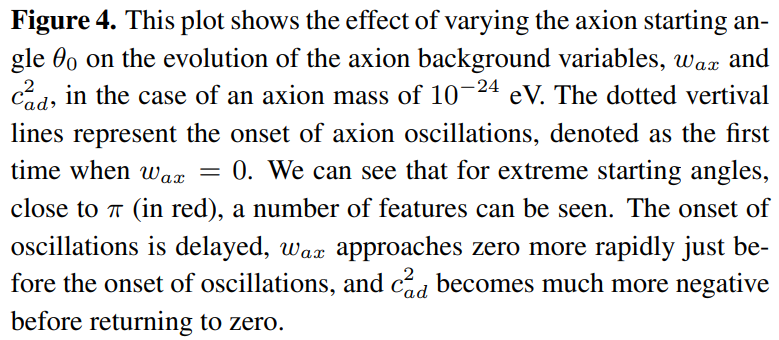
3.1. Changes to axion background variables
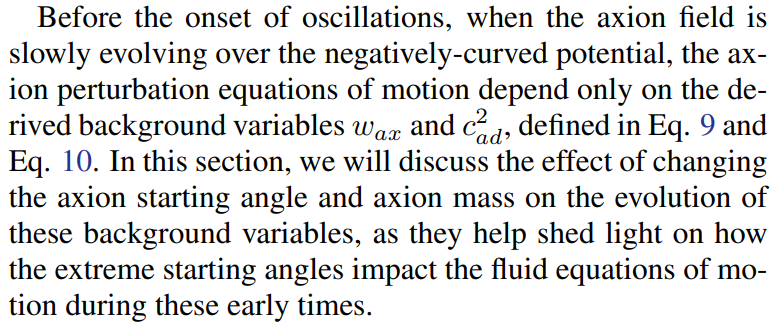
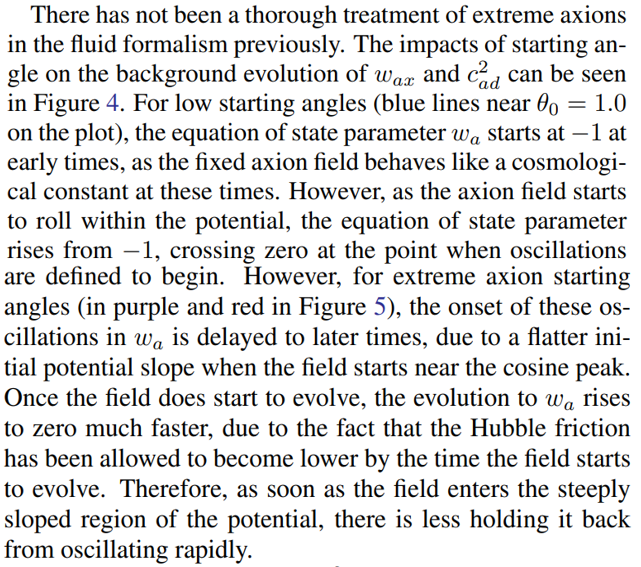


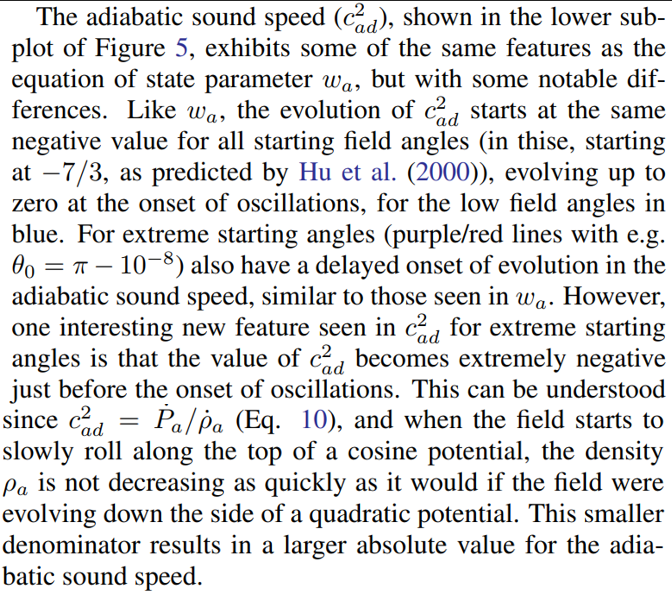

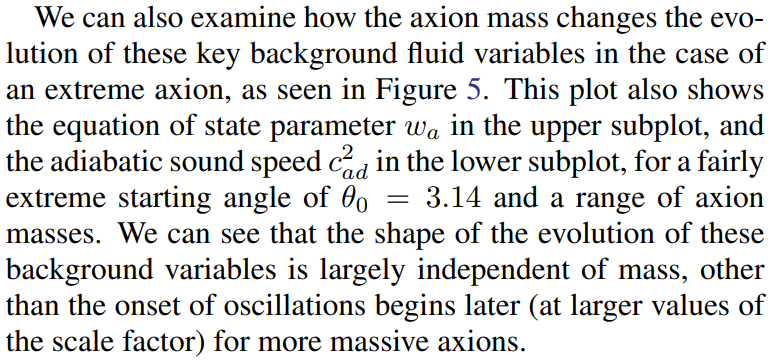
3.2. Matter Power Spectrum Signatures
These changes to the background fluid variables also impact the MPS, which is what gives us the cosmological observables that can be seen in Ly-α forest. In this section, we describe the impact of axion mass, starting angle, and axion DM fraction on the MPS, and compare the results to the linear MPS estimated using the eBOSS DR14 Ly-α forest data and the ΛCDM model, as described in Section 2.6 . Note that we are not doing a full hydrodynamical simulation of the Ly-α flux power spectrum, but are instead using the z = 0 linear matter power spectrum estimated using the Lyα forest data. This estimation has a number of limitations. The linearization of the Ly-α power spectrum, and the evolution to z = 0, both assume pure CDM physics. In addition, these estimates marginalise over a number of astrophysical parameters describing the nonlinear fluid dynamics, which may have non-trivial degeneracies with both cosmological and axion parameters, which would need to be investigated more thoroughly in a robust comparison to Ly-α forest data. Therefore, this comparison should not be considered quantitatively robust, but instead as a qualitative demonstration of how and where extreme axions can alleviate previous Ly-α forest constraints on vanilla axion models.
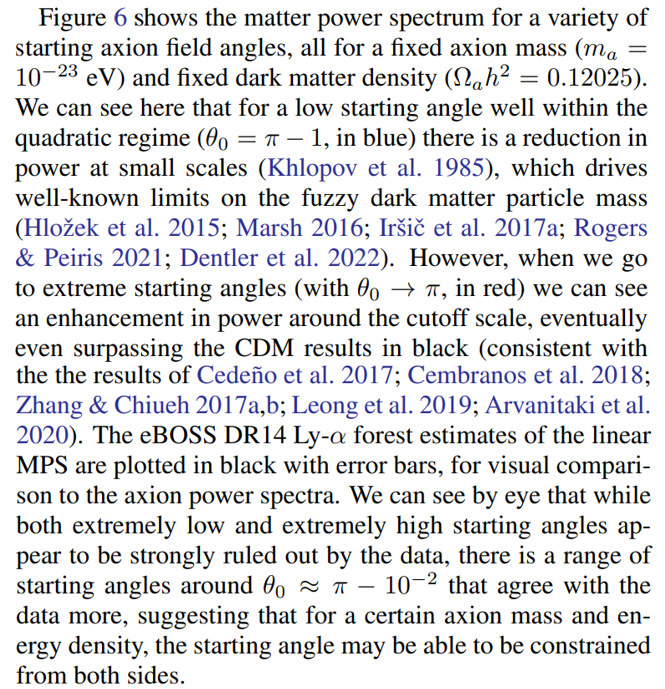
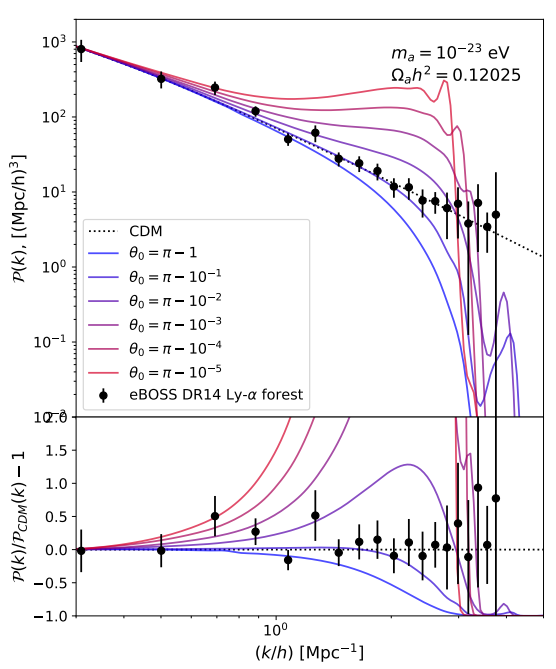

Figure 7 shows how the matter power spectrum depends on axion mass, for both low and high axion starting angle, again overlaid with the eBOSS DR14 Ly-α forest data. The axion mass changes the cutoff scale in the matter power spectrum for the low-angle vanilla axions, with lower mass axions exhibiting a reduction in power at larger scales (lower k values), in agreement with Hlozek et al. ˇ (2015). The axion mass also changes the scale at which enhancement in the matter power spectrum occurs for the extreme axions. Similarly to the vanilla axion cutoff, the extreme axion enhancement occurs at larger scales (smaller k values) for lower axion mass. The two effects appear to be synchronized, with a similar shift in k for both the vanilla cutoff and the extreme enhancement. By comparing the eBOSS DR14 Ly-α forest data to the models we can see that measurements at smaller scales allow us to constrain both the vanilla and extreme axion models at higher masses.
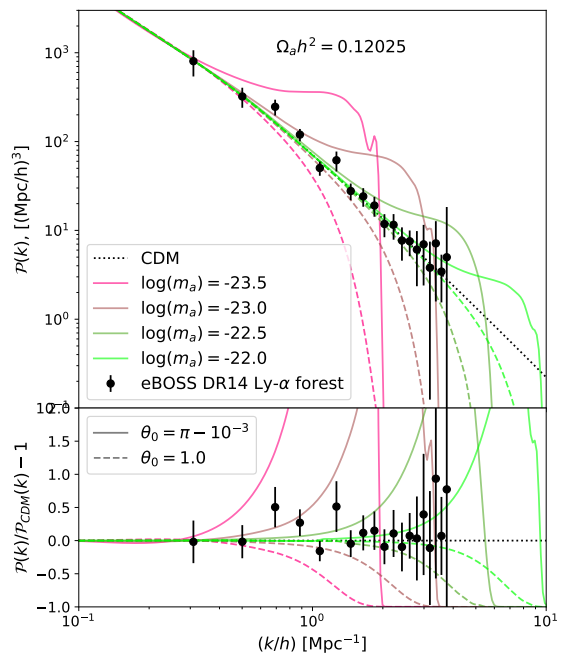

Figure 8 shows how the MPS depends on the axion fraction, for two masses and a fixed extreme starting angle. As expected, lower axion fractions result in the MPS converges to the CDM solution, suggesting that any extreme axion model can be unconstrained at a low enough axion DM fraction.
3.3. Comparison to Ly-α forest estimates of the MPS


In order to compare multiple different models, each with a different maximum likelihood and number of free parameters, it is useful to use the Akaike Information Criterion, given by
